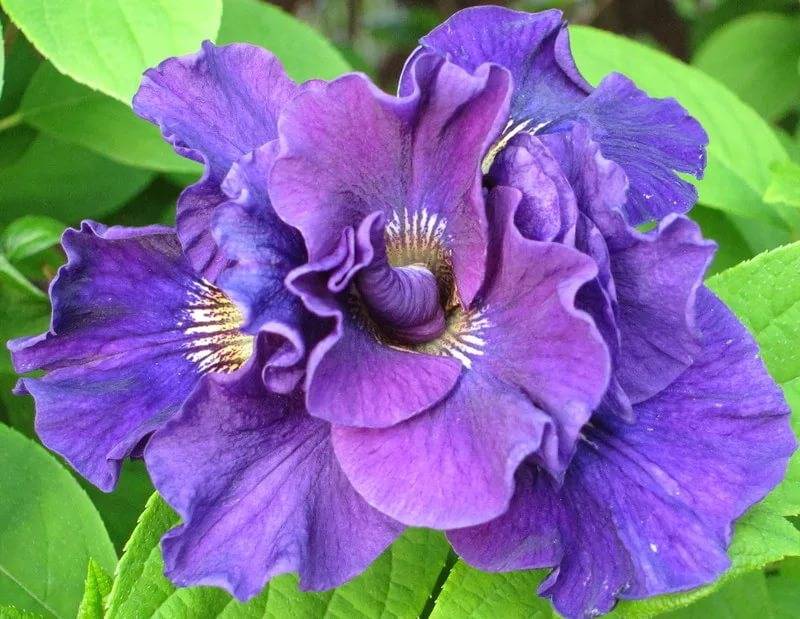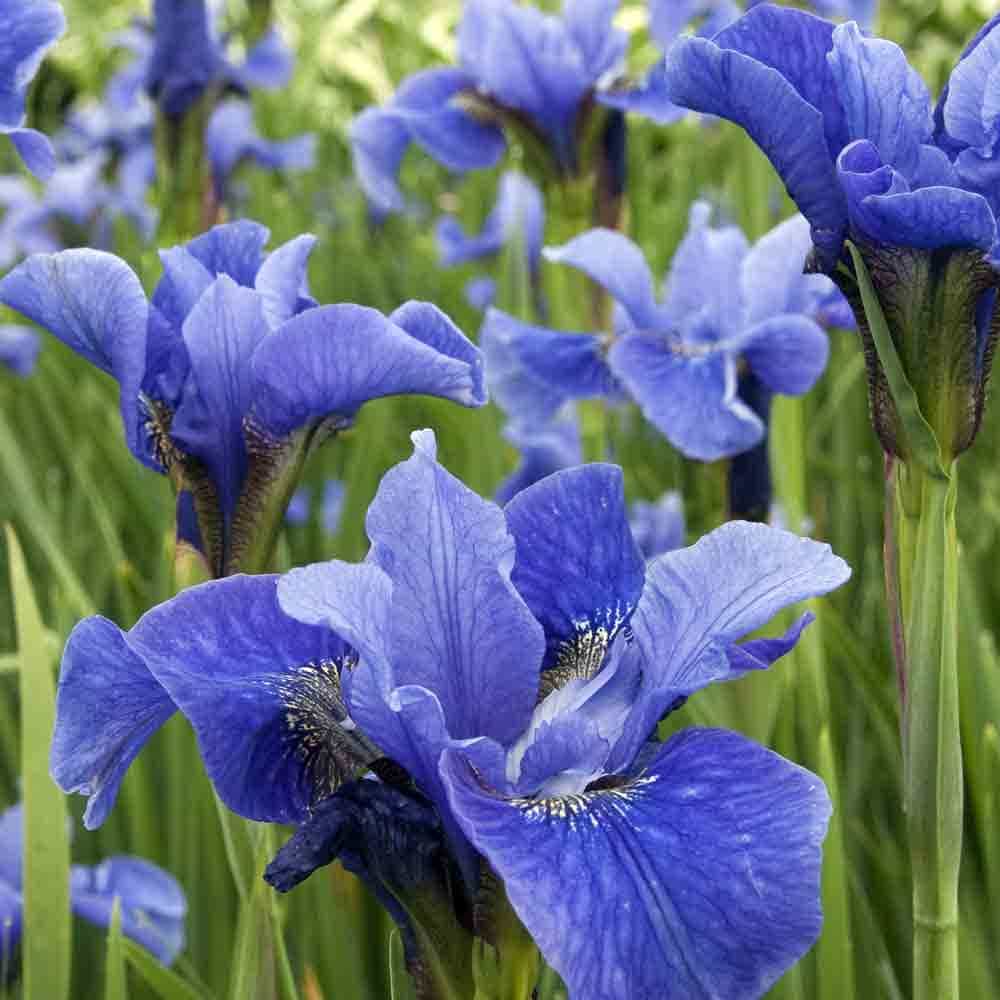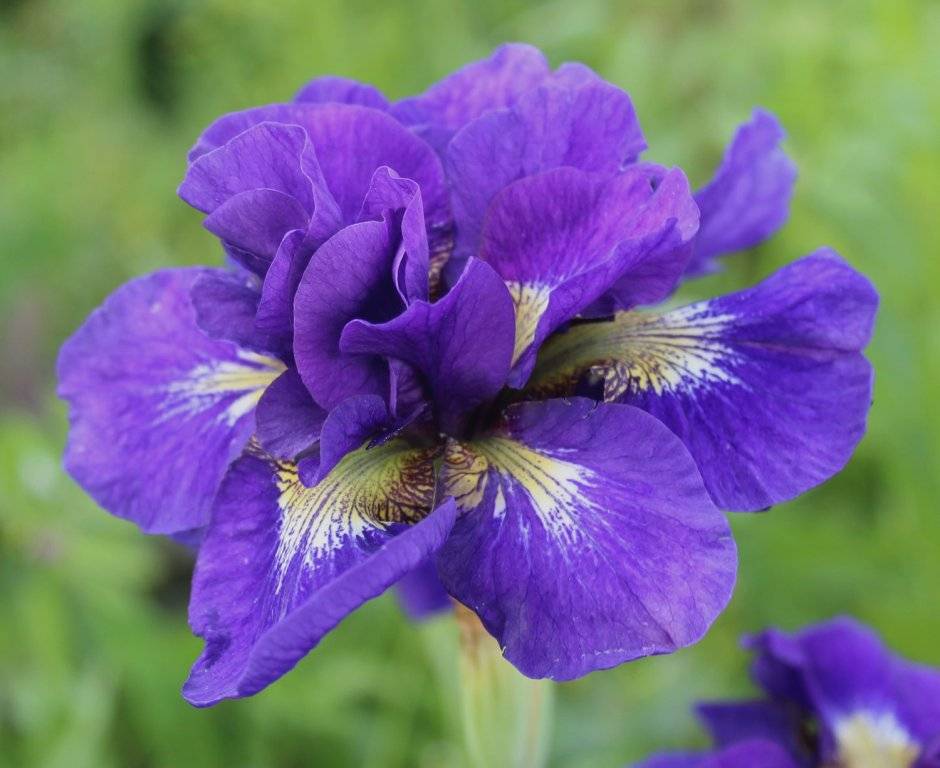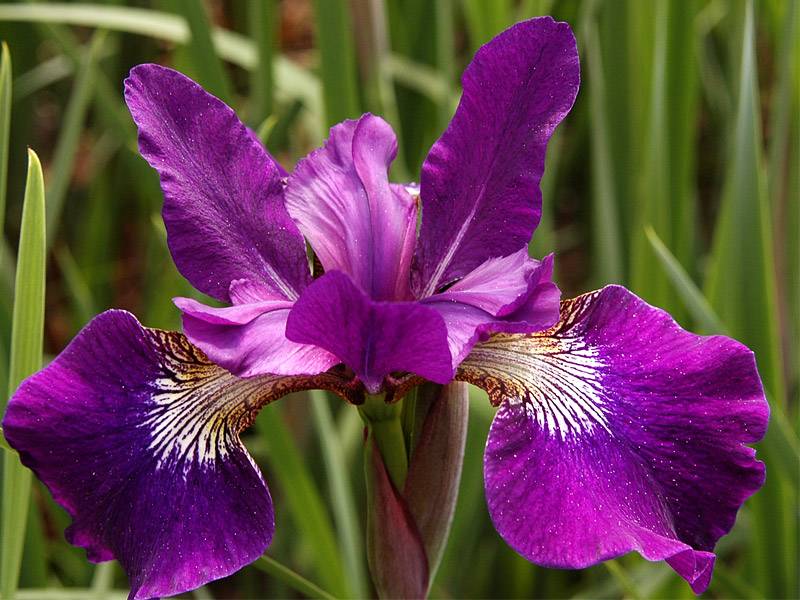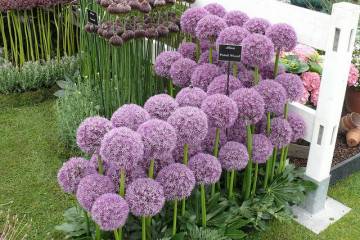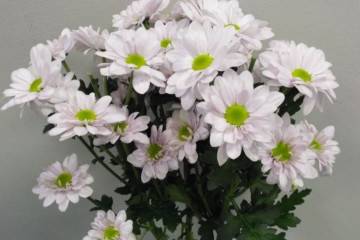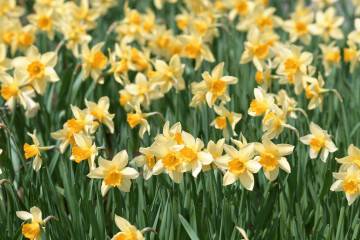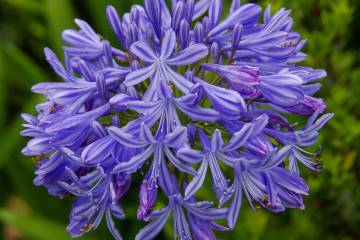Siberian iris - planting and care in the open field
Content:
Siberian irises are very popular among gardeners, and this is due to excellent decorative qualities and unpretentious cultivation. The inhabitants of the Middle Strip are especially happy with this blooming culture, because the variety is not afraid even of abnormally low temperatures.
Description of the Siberian iris flower
All plant species are divided into two large groups - non-bearded and bearded. Siberian iris is one of the brightest representatives of the non-bearded group.
Far Eastern iris is a perennial herb with excellent decorative properties:
- a strong root system is immersed in the soil, but there are varieties in which the roots are at the surface;
- flowers are single or grouped into small inflorescences;
- this species is characterized by a wide variety of shades: from pure white to dark purple;
- each flower has six lobes;
- the surface of the xiphoid leaves is covered with a dense white waxy coating.
Types and varieties
Thanks to the painstaking work of a large number of breeders, a large number of Siberian irises were presented to the world. The most popular varieties should be considered in more detail.
Iris Concord Crush
It is a tall variety characterized by abundant flowering. Subject to the rules of agricultural technology, its height reaches 1 m, and a width of about 0.4 m.During flowering, a large purple flower with a double surface is formed, its diameter is 15 cm.
Siberian white
The plant has another name - the Snow Queen, since the snow-white color of the petals gives the culture extraordinary grandeur. Dense bushes with large hanging leaves are formed. The height reaches 1 m and the width is about 60 cm.
Long bloom from early June to late July.
Iris siberian blue
This variety is characterized by excellent indicators of frost resistance and love of moisture.
It is characterized by rapid growth and lush flowering. This is a favorite of landscape designers.
Siberian yellow
Yellow iris reaches a height of about 80 cm. On each inflorescence 4-5 flowers are formed, their color is yellow-orange.
Iris Siberian blue
A characteristic feature of the variety is the formation of sky-blue delicate flowers. The height can vary from 90 to 110 cm, it depends on the weather and climatic conditions, the characteristics of care.
The variety is characterized by excellent indicators of frost resistance.
Siberian terry
This plant has another common name - Rosie Bowes.
Large double flowers bloom unevenly on the bushes, the bottom rows go first. They are large in size, reaching 12 cm in diameter. The petals are painted in pink-lilac color.
Iris siberian purple
The culture blooms relatively late, in mid-June, but this does not prevent the bush from maintaining its decorative qualities throughout the growing season.
It is important to remove dried fragments regularly and in a timely manner.
Iris Siberian Iris
A characteristic feature of the variety is the formation of bluish-blue flowers with pronounced veins of purple color. The diameter of the opened flower reaches 7 cm, but the height of the bush can reach 1.3 m.
Subject to the rules of agricultural technology, they bloom from May to July. In the wild, it predominantly grows in places where the soil is moist.
It is also worth paying attention to other equally well-known species:
- Ruffled Plus;
- Cassandra;
- Barcelona;
- pink.
Planting Siberian iris in open ground
Shortly before planting the plant, the site must be dug up and, if necessary, nutrients must be added to the soil.
If group planting is planned, then the interval between the curtains should be 60-100 cm.Every year this variety builds up a large amount of green mass.
The landing itself does not have any specific requirements. The rhizomes of the plants are buried 3-5 cm. The holes are dug under the bulbous size. The roots should not bend when landing. Finally, the soil is mulched with any material such as compost, peat or dry grass.
Reproduction of Siberian iris and transplant
The propagation of hybrid iris varieties is carried out by dividing the rhizomes, since the seed material is not able to convey the varietal characteristics of a flowering crop.
Also, irises are self-pollinated, on the one hand, this is good, on the other hand, it is bad, since valuable specimens can be littered with rootless offspring.
Siberian iris care
Many gardeners love Siberian irises, planting and caring for them in the open field does not cause any particular difficulties. The main requirement is the regular introduction of organic and mineral dressings. For rootless representatives, it is preferable to use complexes that acidify the soil. Fertilizers are applied at least twice during one growing season: the first time soon after awakening in the spring and the second time during the formation of peduncles.
Another requirement is the constant maintenance of the mulch layer so that the root system remains cool. Water the plant as needed to keep the soil surface moist.
Pruning is reduced to excision of peduncles and sanitary pre-winter cutting of leaves.
Pest and disease control
Far Eastern irises have strong immunity and get sick quite rarely, only under unfavorable weather conditions, non-observance of the rules of agricultural technology.
To protect the plant or cure it, you need to irrigate the inflorescences, stems and leaves with special fungicides, for example, a 0.4% solution of copper oxychloride.
As for insects, butterflies caterpillars, gladiolus thrips and iridescent sawflies can hit the flowering culture. Insecticides help against them.
Siberian iris is an attractive and at the same time unpretentious plant that will gladly decorate personal plots and lawns. Planting, replanting and caring for a plant is easy and simple.

